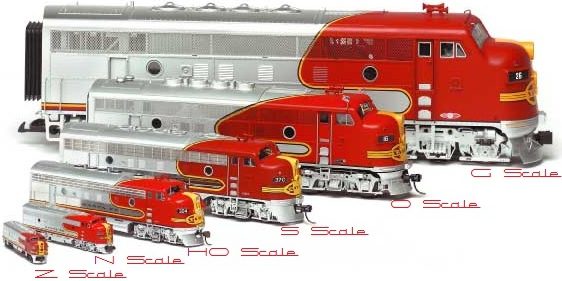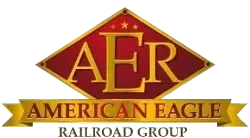Endless Opportunities in Variety of Scales
If you’re just getting started in the World’s Greatest Hobby, here’s a quick reference to the scales available. When considering the construction of any scale, take into consideration the amount of space and budget you have to build your model railroad system.

Z Scale: Z Scale (1:220) is the smallest scale available. This tiny scale is very useful in the construction of a custom model layout in the smallest space. Often seen in suitcases, this scale is often used to provide forced perspective in other scales to showcase trains further in the distance, making your HO or N scale appear larger than it is.
N-Scale: N scale (1:160 or 1/160th) is approximately half the size of the HO scale. This scale allows a considerable amount of railroad to be built in even the most restricted space (e.g. coffee table). This scale offers the same amenities as its counterpart HO, in that Digital Command Control is also available for realistic operations.
HO Scale: HO scale (1:87 or 1/87th scale) is approximately half the size of the O Scale. Considered the most popular scale of model railroading, the scale offers thousands of products. This scale also enables a modeler to incorporate a considerable amount of railroad in a restricted space as well. However, with the HO scale, the level of detail is far superior and less cumbersome to operate in terms of size. In addition, you can achieve a realistic operation in a relatively small area (e.g. 4’x8’ space), including Digital Command Control.
S Scale: S Scale (1:64) Commonly referred to as American Flyer, this scale became very popular in the mid-1900s. Scaled shortly larger than HO, this scale maintained popularity among many model railroad enthusiasts for decades. Accessories for this scale are being re-created and are available for the concerned collectors. Realistic operations can be achievable in a relatively large space.
O Scale: O Scale (1:48 or 1/4th) represents one foot of the prototype. This scale is the most commonly referenced to childhood memories of the holiday seasons. This scale is truly inspiring and a favorite among any age range. Often referred to as the “third rail” of railroading, technology has now empowered 2-rail versions for realistic operations, including Digital Command Control. When considering building an O Scale layout, one has to consider the size of the equipment, the operating needs of locomotives, and the scenery scale. Although achievable in a relatively small space, more space is typically required for realistic operations. Mikes Train House (MTH) and LIONEL continue to manufacture this scale with a variety of accessories.
O27 Scale: O27 Scale is also 1:48 scale. However, this scale differs from the O Scale relevant to tighter curves. For example, O27 track sections will make a 27" circle as opposed to O scale track sections forming a 31" circle. In addition, O27 rail is shorter and thinner than the standard O-scale track as well. As with the O-scale, there is a variety of space required to provide realistic operations.
G scale: G Scale (1:22.5) is often referred to as the “garden” style. This scale is commonly found outside, running through landscaped backdrops or courtyards. This style of railroading accents any outdoor garden or indoor ceiling-style railroads.
Looking for help to get started?
- To help identify your need in designing a new Model Railroad Construction project, AER Group has this questionnaire to utilize as a starting block in making your model railroad dream come true. Getting Started Questionnaire
Not sure where to start?
Contact us today or call us at (859) 577-5007
